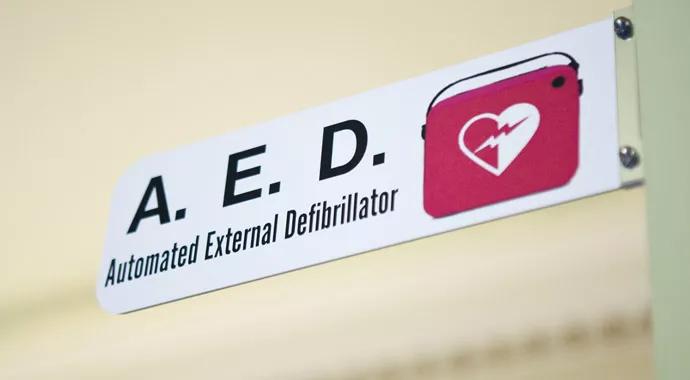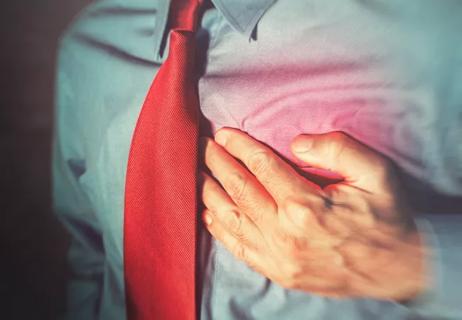Despite rise in intervention rates, more public education needed

When it comes to out-of-hospital cardiac arrest, little has changed over the past 30 years. Outcomes remain poor, with the American Heart Association reporting a 9.5 percent survival rate among the 359,4000 people who experienced out-of-hospital cardiac arrest in 2013. At the same time, mortality rates associated with other cardiovascular conditions, such as myocardial infarction, have fallen.
Cleveland Clinic is a non-profit academic medical center. Advertising on our site helps support our mission. We do not endorse non-Cleveland Clinic products or services. Policy
A pair of studies recently published in JAMA provide insight into how survival rates for individuals with out-of-hospital cardiac arrest might improve. The studies indicate that intervention by bystanders — i.e., use of CPR alone or CPR and a defibrillator — prior to the arrival of emergency medical services (EMS) is associated with increased rates of survival with good neurological outcomes.
“When an individual in the public starts CPR, and then the EMS arrives and performs defibrillation, the patient with cardiac arrest fares far better than when the EMS comes first and does CPR and defibrillation,” says Venu Menon, MD, Director of the Coronary Care Unit in Cleveland Clinic’s Robert and Suzanne Tomsich Department of Cardiovascular Medicine. ““The difference between those two scenarios is time.” Dr. Menon was not involved in the studies.
Each of the new studies looked at how a large population of patients with out-of-hospital cardiac arrest fared after bystander assistance as well as changes in rates of bystander assistance over time
One study examined the cases of 4,961 patients in North Carolina over the period 2010-2013 following a statewide effort to educate the public on the importance of bystander interventions, including training the public in CPR and the use of automated external defibrillators. The study assessed survival rate as well as neurological outcomes.
The rate of bystander interventions increased from 14.1 percent of cases in 2010 to 23.1 percent in 2013. Survival with positive neurological outcomes also increased, from 7.1 percent in 2010 to 9.7 percent in 2013, and this improvement was associated with bystander intervention. What’s more, overall survival rates increased from 15.2 percent when paramedics performed CPR and defibrillation without prior bystander intervention to 33.6 percent when bystander intervention preceded paramedics’ efforts. All of these changes were statistically significant.
The other study examined 167,912 cases of bystander-witnessed out-of-hospital cardiac arrest in Japan from January 2005 to December 2012. Over the course of the study, the number of cardiac arrest incidents increased, as did the proportion of cases where bystanders intervened prior to paramedics arriving on scene. Rates of bystander-administered CPR rose from 38.6 percent in 2005 to 50.9 percent in 2012. Although rates of bystander use of defibrillators were much lower, similar increases were seen over time.
The researchers found that bystander intervention with either CPR or defibrillation increased rates of neurologically intact survival by twofold or more compared with EMS-only intervention and that these increases were statistically significant.
The authors of both studies note that despite their findings on the importance of bystander intervention, rates of bystander intervention in cases of cardiac arrest remain low (about 25 percent in North Carolina and about 50 percent in Japan).
They recommend more education of the general public on intervention with both CPR and defibrillators and on the importance of helping out when someone is in distress in public places. They point out that while these actions might seem to have only a minor influence, outcomes can continue to improve if more people intervene when needed.
Cleveland Clinic’s Dr. Menon echoes this call. “We should continue to encourage and educate the public, so that more and more prompt bystander intervention is done,” he says.

Further acute testing not needed if ECG and high-sensitivity troponin are negative

Scott Cameron, MD, PhD, also brings wide-ranging research interests to bear

Pioneering U.K. vascular surgeon joins Cleveland Clinic

AHA statement is first comprehensive document on perioperative stroke reduction

Recognition reflects prioritization of long-term patient outcomes

Recommendations help distinguish exercise-induced remodeling from pathology

JACC review highlights factors unique to women, ways to tailor management

Pushing the envelope in ablation of atrial fibrillation, ventricular tachycardia